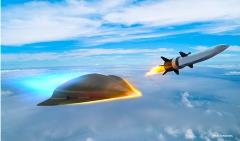Flight Vehicle Guidance Navigation and Control Systems (GNC): Analysis and Design Online

- This course focuses on the principles of GN&C (Guidance, Navigation and Control) systems analysis and design for aerospace flight vehicles
- It will also include illustrative GN&C design examples of various flight vehicles, such as conventional missiles, launch vehicles, Mars EDL (Entry, Descent & Landing) vehicles, and hypersonic missiles/vehicles, to enhance the learning experience
- All students will receive an AIAA Certificate of Completion at the end of the course
Overview
This course is intended for GNC engineers and graduate students, who are interested in a comprehensive overview of the principles of GNC analysis and design for aerospace flight vehicles. It is in part based on the instructor’s two AIAA textbooks: “Space Vehicle Dynamics and Control (2nd Edition, 2008)” and “Space Vehicle Guidance, Control, and Astrodynamics (2015).” Recent advances in GNC systems design for aerospace flight vehicles, such as conventional missiles, launch vehicles, Mars EDL vehicles, and hypersonic missiles/vehicles, will also be covered.
What You Will Learn
- The basic physical concepts and mathematical tools required for the dynamical modeling, analysis, design, and simulation of GNC systems of aerospace flight vehicles
- The fundamental principles of GNC design methodologies
- GNC Overview for Hypersonic Glide Vehicles versus Hypersonic Cruise Missiles
Key Course Topics
- Nonlinear 6 DOF Equations of Motion of Flight Vehicles
- Strapdown Inertial Navigation Principles
- Guidance and Control of Missiles and Launch Vehicles
- Orbital Intercept and Rendezvous Guidance
- Mars EDL Guidance and Control
- Hypersonic Reentry Guidance
Who Should Attend: This course is intended for GNC engineers/researchers and graduate students, who want to enhance their basic understanding of the fundamental principles of GNC design theory and practical applications. This course focuses on the basic physical concepts and mathematical tools required for GNC systems analysis and design of advanced aerospace flight vehicles.
This course is also available as an on-demand short course. (Sign-In To Register)
(Image Courtesy of Raytheon and DARPA)
Type of Course: Instructor-Led Short Course
Course Length: 2 days
AIAA CEU's available: Yes
Outline:
1 Overview of GNC/ADCS (2 hrs)
1.1 Flight Vehicle GN&C Systems
1.2 Spacecraft ADCS (Attitude Determination and Control System)
2 Inertial Navigation Systems (2 hrs)
2.1 Navigation Reference Frames
2.2 Strapdown Inertial Navigation Principles
2.3 Navigation Equations
3 Missile Guidance (3 hrs)
3.1 PN (Proportional Navigation) Guidance and Its Variants
3.2 Explicit/Predictive Guidance
3.3 Linearized Perturbation Guidance
3.4 Optimal Feedback Guidance
3.5 ZEM/ZEV Feedback Guidance and Its variants
3.6 Impact Time Control (ITC) Guidance
3.7 Impact Time and Angle Control (ITAC) Guidance
3.8 Missile Flight Control Systems Analysis & Design
4 Orbital Guidance (2 hrs)
4.1 CWH Equations of Relative Motion in Space
4.2 Orbital Rendezvous Guidance
4.3 Orbital Intercept Guidance
4.4 Divert and Attitude Control System (DACS) of Kinetic Interceptors
5 Launch Vehicle Ascent Guidance (2 hrs)
5.1 Ascent Guidance Laws
5.2 Nonlinear 6 DOF Equations of Motion of Launch Vehicles
5.3 Ascent Simulation of a Launch Vehicle
6 Launch Vehicle Ascent Flight Control (1 hr)
6.1 Transfer Function Models of Launch Vehicles
6.2 Ascent Flight Control Design
6.3 TVC Design Example of a Sounding Rocket
7 Mars ED&L Guidance and Control (2 hrs)
7.1 Introduction to ED&L Guidance Problem
7.2 Human Mars Entry Design Problem Overview
7.3 Lunar Powered D&L Example
7.4 Mars Powered D&L Guidance Example
7.5 Two-Phase ZEM/ZEV Guidance for Mars D&L
8 Hypersonic Missile/Vehicle Guidance and Control (2 hrs)
8.1 Hypersonic Glide Vehicles vs. Hypersonic Cruise Missiles
8.2 Hypersonic Flight Dynamics Overview
8.3 Apollo 10 Reentry Simulation Example
8.4 Hypersonic Glide Vehicle Reentry Design Examples
Dr. Bong Wie is Professor of Aerospace Engineering at Iowa State University. He holds a B.S. in aerospace engineering from Seoul National University and a M.S. and Ph.D. in aeronautics and astronautics from Stanford University. In 2006 he received AIAA’s Mechanics and Control of Flight Award for his innovative research on advanced control of complex spacecraft such as solar sails, large flexible structures, and agile imaging satellites equipped with control moment gyros. He is the author of two AIAA textbooks: “Space Vehicle Dynamics and Control (2nd edition, 2008)” and “Space Vehicle Guidance, Control, and Astrodynamics (2015).” He has published 210 technical papers including 80 journal articles. He has three US patents on singularity-avoidance steering logic of control moment gyros. In early 2010s, he was actively involved in guidance, control, and astrodynamics research for deflecting or disrupting hazardous near-Earth objects (NEO). From 2011-2014, he was a NIAC (NASA Advanced Innovative Concepts) Fellow for developing an innovative solution to NASA’s NEO impact threat mitigation grand challenge and its flight validation mission design. His NIAC study effort has resulted in two distinct concepts for effectively disrupting hazardous asteroids with short warning time, called a hypervelocity asteroid intercept vehicle (HAIV) and a multiple kinetic-energy impactor vehicle (MKIV). During late 2010s, his research focused on further developing the ZEM/ZEV feedback guidance strategies for robotic/human Mars precision powered descent & landing with hazard avoidance and retargeting. He is currently exploring a technically challenging, guidance problem of hypersonic missiles/vehicles and an advanced guidance problem of missiles with precision impact time and angle control (ITAC) requirements. He is co-Editor of Astrodynamics, an international journal newly established in 2018.
AIAA Training Links
For information, group discounts,
and private course pricing, contact:
Lisa Le, Education Specialist (lisal@aiaa.org)
